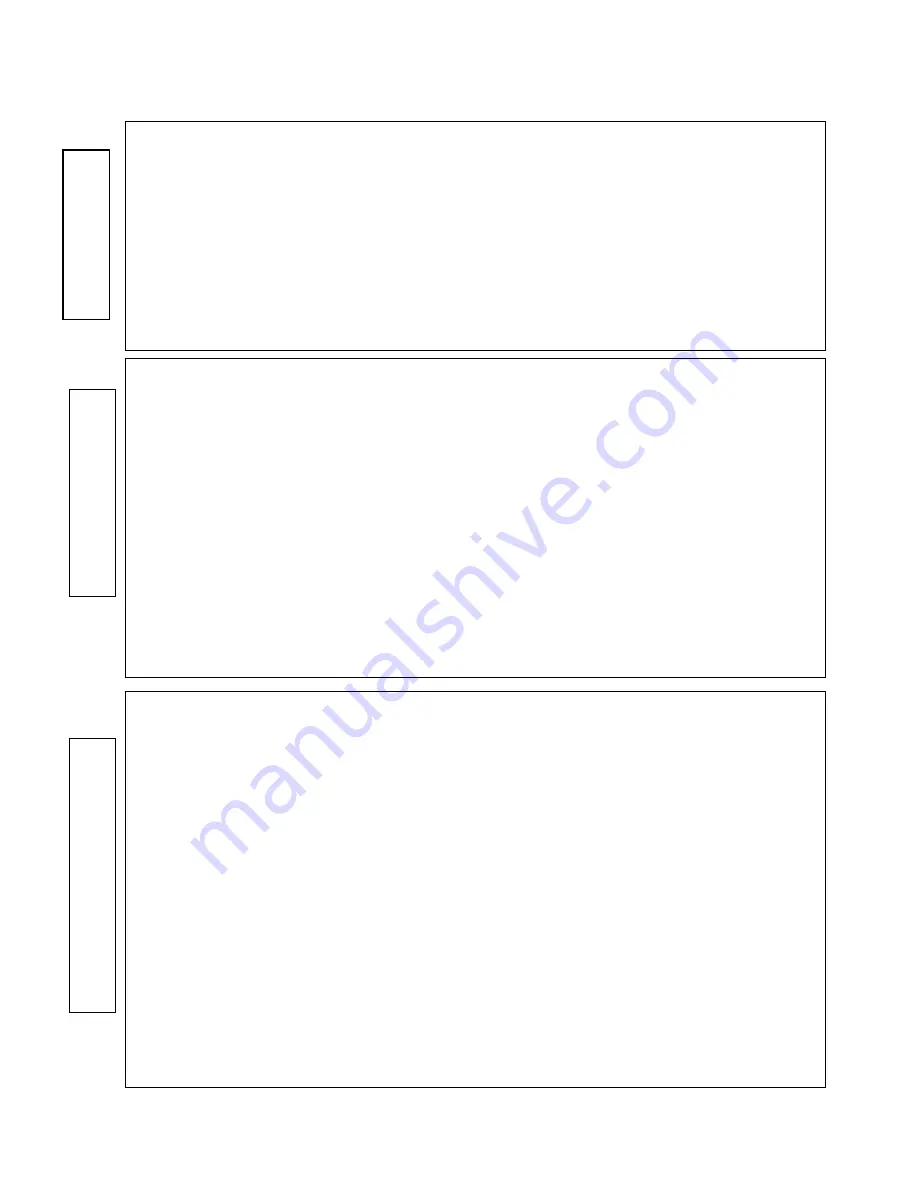
8
•
DO NOT attempt to tamper with or make any adjustments or repairs to door, control panel or any
other part of the oven. Do NOT remove outer panel from oven. Repairs should only be done by
qualified service personnel.
•
DO NOT operate the oven empty. The microwave energy will reflect continuously throughout the
oven if no food or water is present to absorb energy.
•
If a fire occurs in the oven, turn the timer to
“
0
“
and LEAVE THE DOOR CLOSED.
Disconnect the power cord, or shut off power at the fuse or circuit breaker panel.
•
DO NOT attempt to dry clothes, newspapers or other materials in oven. They may catch on fire.
•
DO NOT use recycled paper products, as they may contain impurities, which may cause sparks
and/or fires when used.
•
DO NOT hit or strike control panel. Damage to controls may occur.
•
METAL CONTAINERS or dishes with metallic rims should not be used. Arcing may occur.
•
METAL TWIST-TIES may not be used in the microwave oven.
•
DO NOT use SEALED JARS or NARROW NECK bottles for cooking or reheating. They may
shatter.
•
DO NOT use CONVENTIONAL THERMOMETERS in the microwave oven. They may cause
arcing. Use only those labeled “Microwave Safe” and follow all directions. Check the food in
several places.
•
Remove PLASTIC STORE WRAPS before cooking or defrosting in the oven.
RECOMMENDED
•
Microwave browning dish – Use to brown exterior of small items such as steaks, chops, or
pancakes. Follow the directions provided with your browning dish.
•
Microwaveable plastic wrap – Use to retain steam. Leave a small opening for some steam to
escape and avoid placing it directly on the food.
•
Paper towels and napkins – Use for short-term heating and covering; these absorb excess
moisture and prevent splattering. Do not use recycled paper towels, which may contain metal and
could ignite.
•
Never use your microwave oven for HOME CANNING. The oven is not designed to permit
proper canning. Improperly canned food may spoil and be dangerous to consume.
•
COOKING TIMES are approximate. Factors that may affect cooking are starting temperature,
altitude, volume, size and shape of food and utensils used. As you become familiar with the
oven, you will be able to adjust for these factors.
•
It is better to UNDERCOOK RATHER THAN OVERCOOK foods. If food is undercooked, it can
always be returned to the oven for further cooking. If food is overcooked, nothing can be done.
Always start with minimum cooking times.
•
SMALL QUANTITIES of food or foods with LOW MOISTURE content can burn, dry out or catch
on fire if cooked too long.
•
DO NOT boil eggs in their shell. Pressure may build up and the eggs will explode.
•
Potatoes, apples, egg yolks, whole acorn squash and sausage are examples of food with
NONPOROUS SKINS. These must be pierced before cooking to prevent bursting.
•
POPCORN must be popped in a microwave corn popper. Microwave popped corn produces a
lower yield than conventional popping. DO NOT use oven for popcorn unless popped in a
microwave approved popcorn utensil or unless it’s commercially packaged and recommended
especially for microwave ovens. DO NOT use oil unless specified by the manufacturer.
•
DO NOT attempt to deep fat fry in your oven.
•
HEATED LIQUIDS can ERUPT if not mixed with air. DO NOT heat liquids in your microwave
oven without first stirring.
G
ener
a
l
U
se
Utens
ils
F
ood









































